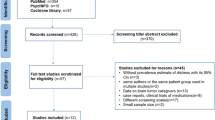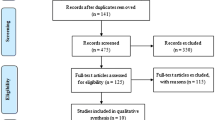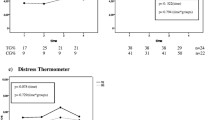Abstract
Identification of patients suffering from elevated psychosocial distress, the sources of the distress, and the necessary treatment of the distress can be rather difficult within the neurosurgical setting (e.g., lack of time, cognitive or aphasic disorders of the patients). The distress thermometer (DT) is a single-item rapid distress screening tool by use of which these difficulties can be minimized. The objective of this study was to determine the optimum DT cut-off score that would identify significant distress in patients with intracranial tumours thus validating its use in the neurosurgical setting. In all, 150 patients were tested either during in-patient stay or during a follow-up examination before and after the neurosurgical removal of a primary intracranial neoplasm. Patients were administered the DT with the hospital anxiety and depression scale (HADS), the gold standard against which the DT was compared. The area under the receiver operating characteristics curve (ROC) was ≥0.82. Thus, the ability of the DT to correctly identify patients as significantly distressed was excellent. The DT ranges from 0 to 10. Its optimum cut-off score for identifying distressed patients was at or above 6 (sensitivity ≥ 88%; specificity ≥ 53%). The DT is a valid and practicable screening instrument for assessment of levels and sources of distress in patients with intracranial tumours in the neurosurgical setting.
Similar content being viewed by others
References
Litofsky NS, Farace E, Anderson F, Meyers CA, Huang W, Le R (2004) Depression in patients with high-grade glioma: results of the glioma outcome project. Neurosurgery 54:358–366
Mainio A, Hakko H, Timonen M, Niemelä A, Koivukangas J, Räsänen P (2005) Depression in relation to survival among neurosurgical patients with primary brain tumor: a 5-year follow-up study. Neurosurgery 56:1234–1242
Mainio A, Tuunanen S, Hakko H, Niemelä A, Koivukangas J, Räsänen P (2006) Decreased quality of life and predictors for shorter survival among patients with low-grade gliomas: a follow-up from 1990–2003. Eur Arch Psychiatry Clin Neurosci 256:516–521
McCarter H, Furlong W, Whitton AC, Feeny D, DePauw S, Willan AR et al (2006) Health status measurements at diagnosis at predictors of survival among adults with brain tumours. J Clin Oncol 24:3636–3643
Colleoni M, Mandala M, Peruzzotti G, Robertson C, Bredart A, Goldhirsch A (2000) Depression and degree of acceptance of adjuvant cytotoxic drugs. Lancet 356:1326–1327
Faller H, Bulzebruck H, Drings P, Lang H (1999) Coping, distress, and survival among patients with lung cancer. Arch Gen Psychiatry 56:756–762
Parker PA, Baile WF, de Moor C, Cohen L (2003) Psychosocial and demographic predictors of quality of life in a large sample of cancer patients. Psychooncology 12:183–193
Watson M, Haviland JS, Greer S, Davidson J, Bliss JM (1999) Influence of psychological response on survival in breast cancer: a population-based cohort study. Lancet 354:1331–1336
Fallowfield L, Ratcliffe D, Jenkins V, Saul J (2001) Psychiatric morbidity and its recognition by doctors in patients with cancer. Br J Cancer 84:1011–1015
Passik SD, Dugan W, McDonald MV, Rosenfeld B, Theobald DE, Edgerton S (1998) Oncologists’ recognition of depression in their patients with cancer. J Clin Oncol 16:1594–1600
Cochinov HM (2001) Depression in cancer patients. Lancet Oncol 2:499–505
Janda M, Steginga S, Langbecker D, Dunn J, Walker D, Eakin E (2007) Quality of life among patients with a brain tumour and their carers. J Psychosom Res 63:617–623
Zabora JR, BrintzenhofeSzoc KM, Curbow B, Hooker C, Piantadosi S (2001) The prevalence of psychological distress by cancer site. Psychooncology 10:19–28
Arnold SD, Forman LM, Brigidi BD, Carter KE, Schweitzer HA, Qiunn HE et al (2008) Evaluation and characterization of generalized anxiety and depression with primary brain tumors. J Neurooncol 10:171–181
Keir ST, Guill AB, Carter KE, Friedman HS (2006) Stress and intervention preferences of patients with brain tumors. Support Care Cancer 14:1213–1219
Litofsky NS, Resnick AG (2009) The relationships between depression and brain tumours—review. J Neurooncol 94:153–161
Brown PD, Ballman KV, Rummans TA, Maurer MJ, Sloan JA, Boeve BF et al (2006) Prospective study of Quality of life in adults with newly diagnosed high-grade gliomas. J Neurooncol 76:283–291
Gustafsson M, Edvardsson T, Ahlström G (2006) The relationship between function, quality of life and coping in patients with low-grade gliomas. Support Care Cancer 14:1205–1212
Kvale EA, Murthy R, Taylor R, Lee JY, Nabors LB (2009) Distress and quality of life in primary high-grade brain tumor patients. Support Care Cancer 17:793–799
Pelletier G, Verhoef MJ, Khatri N, Hagen N (2002) Quality of life in brain tumor patients: the relative contributions of depression, fatigue, emotional distress, and existential issues. J Neurooncol 57:41–49
Janda M, Eakin E, Bailey L, Walker D, Troy K (2006) Supportive care needs of people with brain rumours and their carers. Support Care Cancer 14:1094–1103
Janda M, Steginga S, Dunn J, Langbecker D, Walker D, Eakin E (2008) Unmet supportive care needs and interest in services among patients with a brain tumour and their carers. Patient Educ Couns 71:251–258
Adelbratt S, Strang P (2000) Death anxiety in brain tumour patients and their spouses. Palliat Med 14:499–507
Davies E, Higginson IJ (2003) Communication, information and support for adults with malignant cerebral glioma: a systematic literature review. Support Care Cancer 11:21–29
Holland JC (2002) History of psycho-oncology: overcoming attitudinal and conceptual barriers. Psychosom Med 64:206–221
Taphoorn MJ, Klein M (2004) Cognitive deficits in adult patients with brain tumours. Lancet Neurol 3:159–168
NCCN (2003) Distress management clinical practice guidelines. J Natl Compr Care Netw 1:344–374
Mehnert A, Müller D, Lehmann C, Koch U (2006) Die deutsche Version des NCCN Distress-Thermometers—Empirische Prüfung eines Screening-Instruments zur Erfassung psychosozialer Belastungen bei Krebnspatienten. Zeitschrift für Psychiatrie, Psychologie und Psychotherapie. 54:213–223
Lynch J, Goodhart F, Saunders Y, O’Connor SJ (2010) Screening for psychological distress in patients with lung cancer: results of a clinical audit evaluating the use of the patient Distress Thermometer. Support Care Cancer. doi:10.1007/s00520-009-0799-8
Ransom S, Jacobsen PB, Booth-Jones M (2006) Validation of the Distress Thermometer with bone marrow transplant patients. Psychooncology 15:604–612
Trask PC, Paterson A, Riba M, Brines B, Griffith K, Parker P et al (2002) Assessment of psychological distress in prospective bone marrow transplant patients. Bone Marrow Transplant 29:917–925
Bulli F, Miccinesi G, Maruelli A, Katz M, Paci E (2009) The measure of psychological distress in cancer patients: the use of Distress Thermometer in the Oncological Rehabilitation Center of Florence. Support Care Cancer 17:771–779
Keir ST, Calhoun-Eagan RD, Swartz JJ, Saleh OA, Friedman HS (2008) Screening for distress in patients with brain cancer using the NCCN’s rapid screening measure. Psychooncology 17:621–625
Huber W, Poeck K, Weninger D, Willmes K (1983) Der Aachener Aphasie Test (AAT). Hogrefe, Göttingen
Folstein MF, Folstein SE, McHugh PR (1975) “Mini-Mental-State”: a practical method for grading the cognitive state of patients for the clinician. J Psychiatr Res 12:189–198
Zigmond AS, Snaith RP (1983) The Hospital Anxiety and Depression Scale. Acta Psychiatr Scand 67:361–370
Herrmann C, Buss U, Snaith RP (1995) HADS-D—Hospital Anxiety and Depression Scale—Deutsche Version: Ein Fragebogen zur Erfassung von Angst und Depressivität in der somatischen Medizin. Huber, Bern
Bjelland I, Dahl AA, Haug TT, Neckelmann D (2002) The validity of the Hospital Anxiety and Depression Scale—an updated literature review. J Psychosom Res 52:69–77
Herrmann C (1997) International experiences with the Hospital Anxiety and Depression Scale—a review of validation data and clinical results. J Psychosom Res 42:17–41
Altman DG (1991) Practical statistics for medical research. Chapman & Hall, Boca Raton
Leplow B, Friege L (1998) Eine Sozialformel zur Schätzung der prämorbiden Intelligenz. Zeitschrift für Klinische Psychologie 27:1–8
Barona A, Reynolds CR, Chastain R (1984) A demographically based index of premorbid intelligence for the WAIS-R. J Consult Clin Psychol 52:885–887
Gil F, Grassi L, Travado L, Tomamichel M, Gonzales JR (2005) Use of distress and depression thermometer to measure psychosocial morbidity among southern European cancer patients. Support Care Cancer 13:600–606
Mitchell AJ (2007) Pooled results from 38 analyses of the accuracy of Distress Thermometer and other ultra-short methods of detecting cancer-related mood disorders. Psychooncology 17:226–236
Newell SA, Sanson-Fisher RW, Savolainen NJ (2002) Systematic review of psychological therapies for cancer patients: Overview and recommendations for future research. J Natl Cancer Inst 94:558–584
Author information
Authors and Affiliations
Corresponding author
Appendix 1: Distress thermometer
Appendix 1: Distress thermometer

Rights and permissions
About this article
Cite this article
Goebel, S., Mehdorn, H.M. Measurement of psychological distress in patients with intracranial tumours: the NCCN distress thermometer. J Neurooncol 104, 357–364 (2011). https://doi.org/10.1007/s11060-010-0501-5
Received:
Accepted:
Published:
Issue Date:
DOI: https://doi.org/10.1007/s11060-010-0501-5




